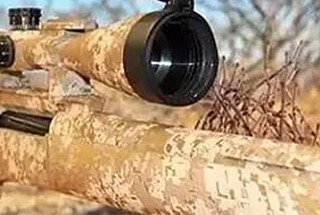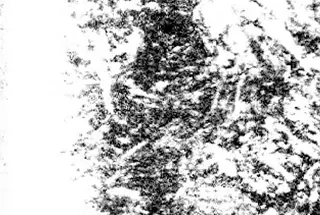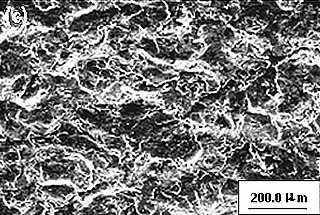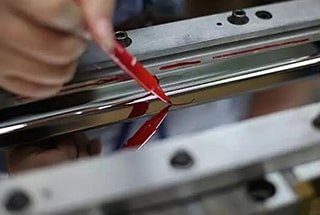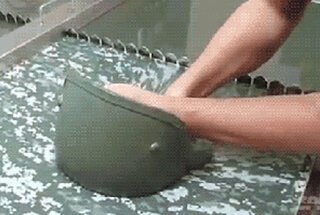
What if you could transform ordinary materials into stunning, high-performance surfaces? In this article, you’ll explore 15 diverse surface treatment techniques that elevate both the functionality and aesthetics of products. From embossing to laser engraving, each method offers unique benefits. Discover how these techniques can enhance durability, appearance, and usability, ensuring your products stand out in a competitive market. Prepare to dive into a world of innovative finishes that can revolutionize your design and manufacturing processes.
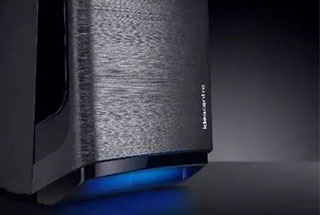
The product design is diverse and texture is one of the key factors that impacts the appearance of a product. Different textures can bring a variety of styles and evoke a range of emotions.
Here’s a quick overview of ten incredible techniques for incorporating surface textures in your designs:
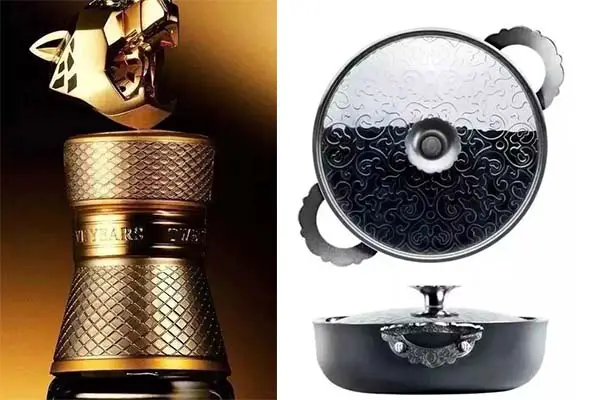
Metal Embossing is a mechanical process that creates a raised and indented pattern on the surface of a metal plate. The process involves the use of a patterned work roller that is used to roll the metal plate. The work roller is typically machined with an abrasive liquid and the depth of the bumps on the metal sheet can range from 0.02-0.03 mm.
The pattern is repeated continuously through rolling, and the length of the embossed metal plates can be virtually unlimited. These plates are widely used for various decorative purposes, including elevators, subway cars, architectural decorations, metal curtain walls, and more.
Embossed metal plates offer several benefits, including an attractive appearance, durability, resistance to wear, ease of cleaning, maintenance-free operation, resistance to impacts, pressure, scratches, and fingerprints.
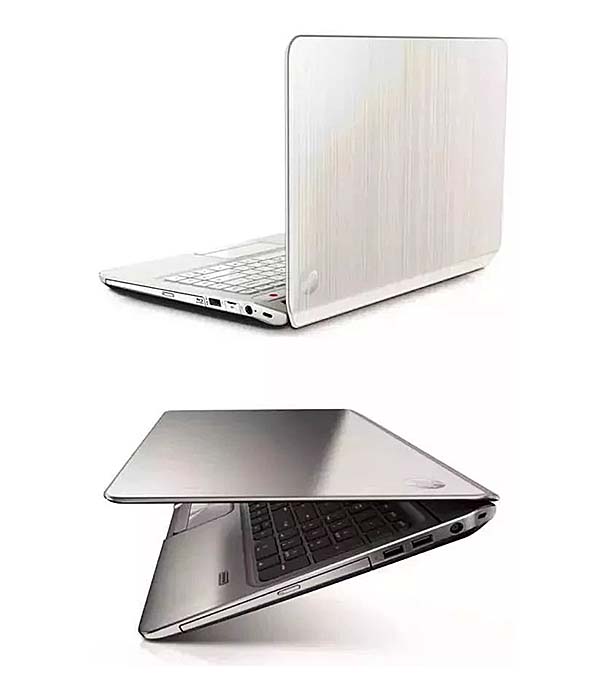
Metal Wire Drawing is a manufacturing process where the surface of the metal is repeatedly scraped using sandpaper to create a fine matte finish with visible tiny lines or marks. This process combines both style and technology to produce a product with a distinct and unique appearance.
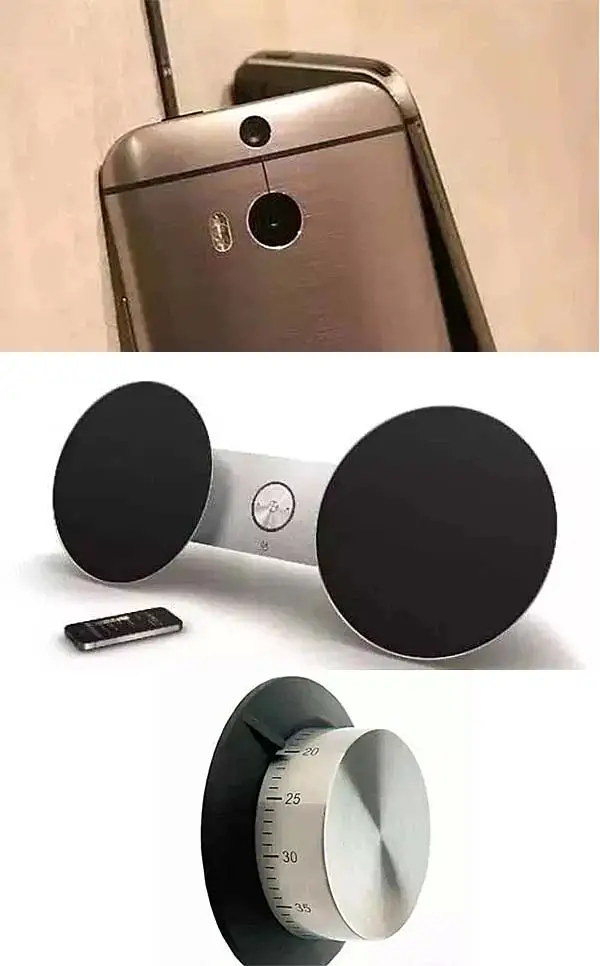
Wire drawing can be produced in various patterns including straight lines, random lines, threads, corrugations, and swirls to meet the demands of decoration.
Straight Lines: Wire drawing involves the processing of straight lines on the surface of aluminum plates through mechanical friction.
Rough Pattern: The aluminum plate is subjected to high-speed operation of a copper wire brush, which results in a random, non-uniform matte silk pattern through movement and friction.
Thread: A small motor with a circular felt is fixed on a table at an angle of about 60 degrees to the edge of the table. A carriage is also made with a fixed depression bar for the aluminum plate and a straight polyester film is pasted along the edge of the carriage to limit the width of the thread. The thread lines with the same width are produced on the metal surface through the rotation of the felt and the linear movement of the carriage.
Corrugation: This pattern is usually produced on a brushing machine or grain rub machine. The surface of the aluminum or aluminum alloy plate is brushed to produce a wave pattern through the axial movement of the upper set of rolls.
Paisley Pattern: This type of silk marks is produced by rotating and polishing the surface of an aluminum or aluminum alloy plate using a cylindrical felt or a stone nylon wheel mounted on a drill bed. The process involves blending kerosene with a polishing ointment. It is mostly used for the decorative processing of circular signs and small decorative dials.

First and foremost, it is important to clarify the concept: IMD encompasses IML, IMF, and IMR.
IML (In-Mold Labeling) is a product whose surface consists of a layer of transparent film with a hard finish, a printed pattern layer in the middle, and a plastic layer at the back. The ink is trapped in the middle layer to prevent scratching and rubbing, ensuring that the color remains bright and vivid for a long time.
The process of creating IML products includes the following steps:
The film production cycle is short, and multiple colors can be displayed. Patterns and colors can be changed at any time during production, and the product has excellent scratch resistance. IML production batches are very flexible and suitable for multi-variety small-scale production.
IML products are widely used in the 3C industry, for mobile phone windows, buttons, logos, and decorative films, among others.

IMR (In-Mold Rolling) is a process where a pattern is printed on a film and then bonded to the mold cavity by a film feeding machine for extrusion. After the extrusion, the patterned ink layer is separated from the film, leaving the ink layer on the plastic part to produce a plastic part with decorative patterns on the surface.
In this process, there is no transparent protective film on the final product. The film serves only as a carrier during the production process.
IMR products are strong and durable, with edges that are fully covered and a strong edge adhesion. The conversion production is very simple, as changing the roll of IMR transfer foil is all that is required.
The process is straightforward, allowing for a low defect rate and minimal personnel requirements. The pattern alignment is precise, the hardness can reach 2H, and the automation level in production is high, resulting in a low cost of mass production.
IMR can produce various textures such as wood, bamboo, marble, leather, etc. However, one of its disadvantages is that the printed pattern layer is only a few microns thick and is located on the surface of the product. Over time, the printed pattern layer can wear off and fade, resulting in an unattractive surface. Additionally, the new product development cycle is long and the development cost is high.
IMR products are widely used in the surface treatment of plastic parts such as laptop cases, home appliance cases, mobile phone cases, ABS, etc.

Water Transfer Printing is a printing technique in which a transfer paper or plastic film with a color pattern is subjected to macromolecular hydrolysis through water pressure.
As consumer demands for product packaging and decoration have increased, the use of water transfer printing has become more widespread.
Its indirect printing method and excellent printing results have solved the problem of surface decoration for many products.
There are two types of water transfer printing technology: watermark transfer technology and water cubic transfer technology. The former primarily transfers text and photo-patterns, while the latter transfers complete patterns to the entire surface of the product.
Cubic transfer uses a water-based film that easily dissolves in water to carry graphics. The excellent tension of the water-coated film allows it to easily wrap around the product’s surface, forming a graphics layer and changing the product’s appearance.
This technique can cover any shape of the workpiece, solving the problem of printing on three-dimensional products for manufacturers. The curved printing can also add different textures to the product’s surface and avoid the common virtual position found in general layout printing.
During the printing process, the product’s surface does not need to be in contact with the printed film, avoiding any damage to the product’s surface and integrity.
Water Transfer Printing is widely used in various applications such as automotive dashboards and interiors, 3C electronic products, household appliances, building materials, etc.

OMD (Over-Molding Decoration) is a process that uses a combination of temperature and pressure. The film material is activated or softened by heat (T) and pressure (P) to transfer or wrap the coating onto the target, thereby improving the surface hardness of the product and increasing the decorative appearance.
There are two types of OMD:
① An extension of IMR technology: IMR’s Out-side, Over-Molding Transfer, also known as high-pressure transfer.
OMR (Release): After printing the pattern on the transparent film, a high-pressure vacuum transfer is used to directly cover the surface of the plastic (or metal) to form a three-dimensional coating.
OMR (Release Film): The film must be torn off after the transfer is completed, and the outer layer of the workpiece is not covered with a film.
The materials that can be transferred include plastic, high glass fiber injection plastic, carbon fiber, glass fiber, metal (such as magnesium and aluminum alloy), touch glass, and building materials.
② An extension of IMF technology: Material high-pressure drawing forming, film printing or different materials coated on the workpiece.
OMF (Forming): OMF (Forming Film) coated film material, the outer layer of the workpiece is covered with a protective product.
OMF only requires a general injection mold, eliminating the need for high-pressure molds or die-cutting molds, greatly reducing mold costs and increasing customer willingness to develop new products.
The covered products are similar to those of OMR and are mostly used in high-quality automotive interiors, aviation and transportation vehicle decorations, 3C, and medical equipment.

After heating the mold, the sample is injected. The model is fixed to the heating plate through pressure. The temperature and time for melting the sample is controlled and allowed to cool and harden after melting. Finally, the finished model is removed.
This process has been widely used in various fields, such as early rice cooker panels, membrane switches, air conditioner panels, washing machine panels, and others.
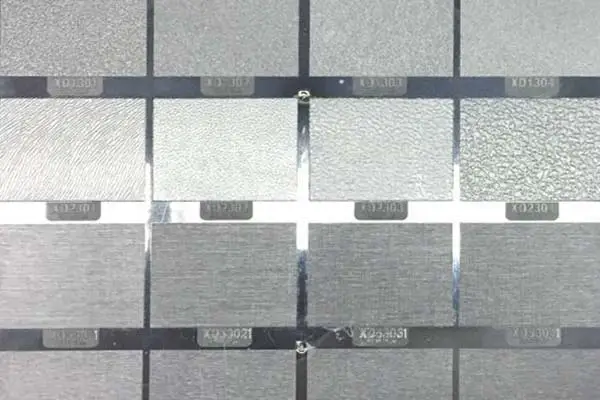
Texturing is achieved through chemical osmosis, resulting in a variety of patterns on the surface of metal products, such as stripes, images, wood, leather, and satin. The process also includes sandblasting, in which glass sand is directly sprayed onto the surface of the metal article.
After texturing treatment, the following features are achieved:
One example of texturing is leather grain, which simulates the texture of a leather surface and is often applied to car steering wheels and interior trim using soft plastics like PU.
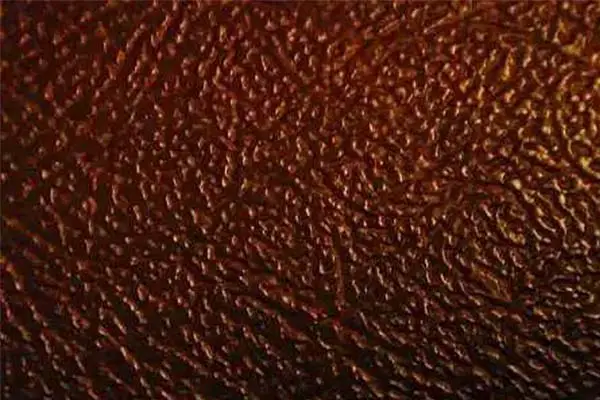
Applied industry
Texturing is widely used in various industries, such as the automotive industry, electronic and electrical industry, daily necessities industry, plastics industry, toy industry, leather industry, and others. In the automotive industry, it is particularly used for the texture of car interior decoration boards.

Hot stamping, also known as “gold stamping,” is a process of transferring a pattern from hot stamping paper to a substrate through the application of heat and pressure. The pressure from the mold creates an indentation, ensuring that the printed words or patterns are not easily blurred, and allowing the pattern, logo, text, or picture to securely adhere to the product surface.
The hot stamping process consists of two main components: hot stamping and foil. Hot stampings are usually made of magnesium, brass, steel, and sometimes silicone rubber is used on the surface of the metal stamping die for surfaces that are not flat.
The hot stamping foil consists of a carrier, a release layer, a protective layer, and a decorative layer. The hot stamping process involves four steps:
(1) the hot stamping foil comes into contact with the substrate,
(2) the transfer layer is transferred onto the substrate surface through heat and pressure,
(3) the pressure is removed and the polyester film is peeled off,
(4) the hot stamping foil is fed and replaced with the printing stamp that will be stamped.

Hot stamping is a suitable technique for a variety of materials, including textiles such as polymers, wood, leather, paper, vinyl, polyester film, and metals that are not easily colored.
This decorative technique offers scratch, abrasion, and peel resistance, making it a popular choice for various applications in retail and cosmetic packaging, book and magazine covers, car decoration, advertising, consumer goods decoration, and information identification.
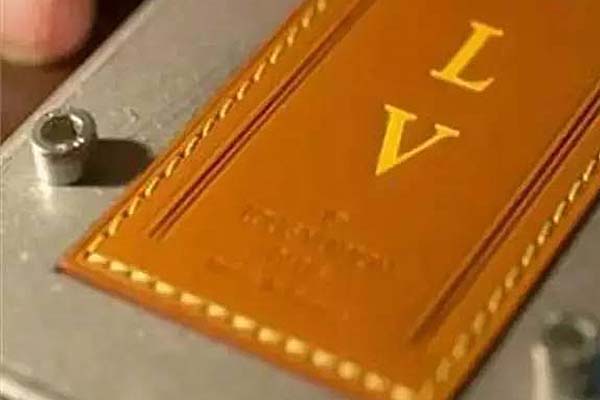
LV (Louis-Vuitton) provides personalized hot stamping service

The laser engraving machine utilizes CNC technology and the laser serves as the processing medium. The process involves the physical degradation of the molten metal and the vaporization of the metal material under laser irradiation, ultimately achieving the desired outcome.
With the use of laser engraving technology, it becomes easy to “print” vectorized images onto the processed substrate.

The technical advantages of this technology are as follows:
Precision: The laser engraving machine is capable of producing the thinnest line width of 0.015mm on the material surface. This is because the processing is non-contact, which prevents deformation of the product.
High Efficiency: With this technology, new products can be produced in the shortest amount of time. Moreover, the vector file can be easily changed to accommodate multi-variety small batches.
Special Processing Capabilities: The laser engraving machine can meet special processing needs, including the ability to process inner surfaces or inclined surfaces.
Environmental Friendliness and Energy Savings: This technology is environmentally friendly and energy-efficient, as it generates no pollution or harmful substances. It meets and surpasses environmental protection requirements for exports.

This technology is also referred to as photochemical etching. The process involves forming a plate through exposure and development, after which the protective film on the region to be etched is removed.
During the etching of the metal, it comes into contact with a chemical solution, which dissolves the metal and creates irregularities or hollows. This ultimately achieves the desired effect.

Etching is a common technique used in consumer products to create patterns or texts, such as logos, on aluminum plates.
Furthermore, etching is frequently utilized to manufacture a range of metal mesh products.

VCM (Vinyl Chloride Metal) plate is a type of metal sheet that has a stainless steel or galvanized sheet surface as its coating.
The printed film product is attached to the surface of the steel sheet by means of adhesion, allowing for the creation of a wide range of patterns and designs due to the variety of film products used.
The VCM board boasts a smooth and flat surface, rich color and pattern effects, and the ability to produce even custom patterns.
Recently, VCM boards with metal wire drawing effects have been used on the back cases of high-end, large-sized TVs to improve the overall quality of the product.
VCM is based on a steel plate, with a metal color laminated steel sheet coated in vinyl chloride on the surface. The printed film product is bonded to the surface of the steel sheet through bonding. This combination results in a product with a beautiful and diverse range of patterns and designs.


CNC Machining refers to the process of using CNC (Computer Numerical Control) machining tools to shape a material.
In CNC machining, the machine tool is programmed using a specific CNC machining language, which controls various parameters such as the feed rate, spindle speed, tool changer, and coolant, to physically manipulate the surface of the substrate.

CNC machining offers significant advantages over manual machining methods. One of the key benefits of CNC machining is that it produces parts with high precision and repeatability. Additionally, CNC machining is capable of producing complex shapes and designs that may not be achievable through manual machining techniques.

Hot Stamping is a process in which a special metal hot stamping plate is used to transfer hot stamping foil onto the surface of the printing material by heating and pressing.
For metal substrates, it is necessary to either use a proprietary metal hot stamping film or apply a hot stamping film to the surface of the substrate through a process such as spraying.
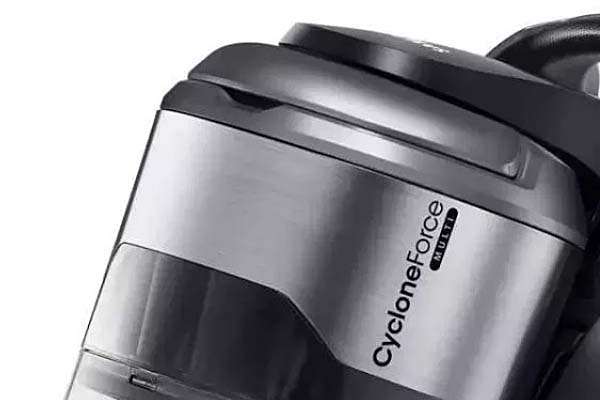
The use of hot stamping foil, which has a wide range of features, enables quick and versatile hot stamping on metal substrates. Additionally, the hot stamping process is more environmentally friendly, allowing us to achieve our desired designs.

Silkscreen printing is a cost-effective method that is simple and affordable for designers. The end result is satisfactory and makes it a popular choice for many.
In silkscreen printing, an image or pattern is attached to a screen for printing, making it suitable for flat, single curved, or slightly curved surfaces. The screen is typically made of materials such as nylon, polyester, silk, or metal mesh.
The printing material is placed under the screen and the stencil, and the screen printing ink or paint is pushed through the mesh in the center of the screen with the aid of a doctor blade. The doctor blade can either be manual or automatic.
The stencil on the screen blocks a portion of the screen aperture, preventing the pigment from passing through. Only the image portion can pass through, resulting in the imprint of only the desired image on the printing material.

